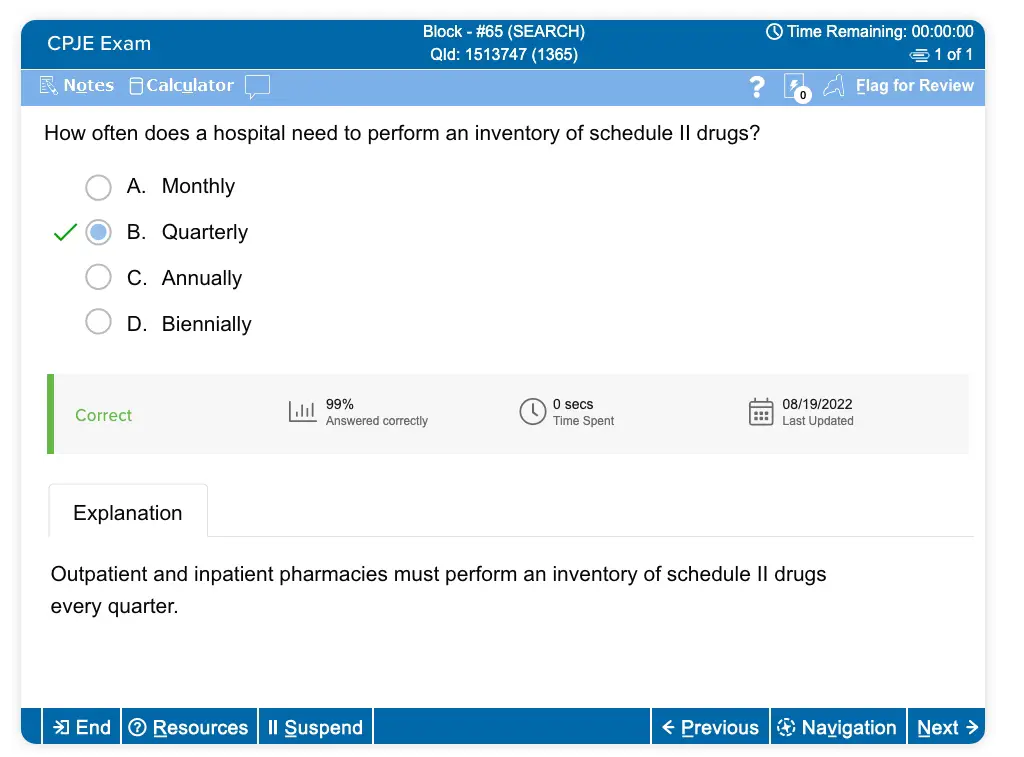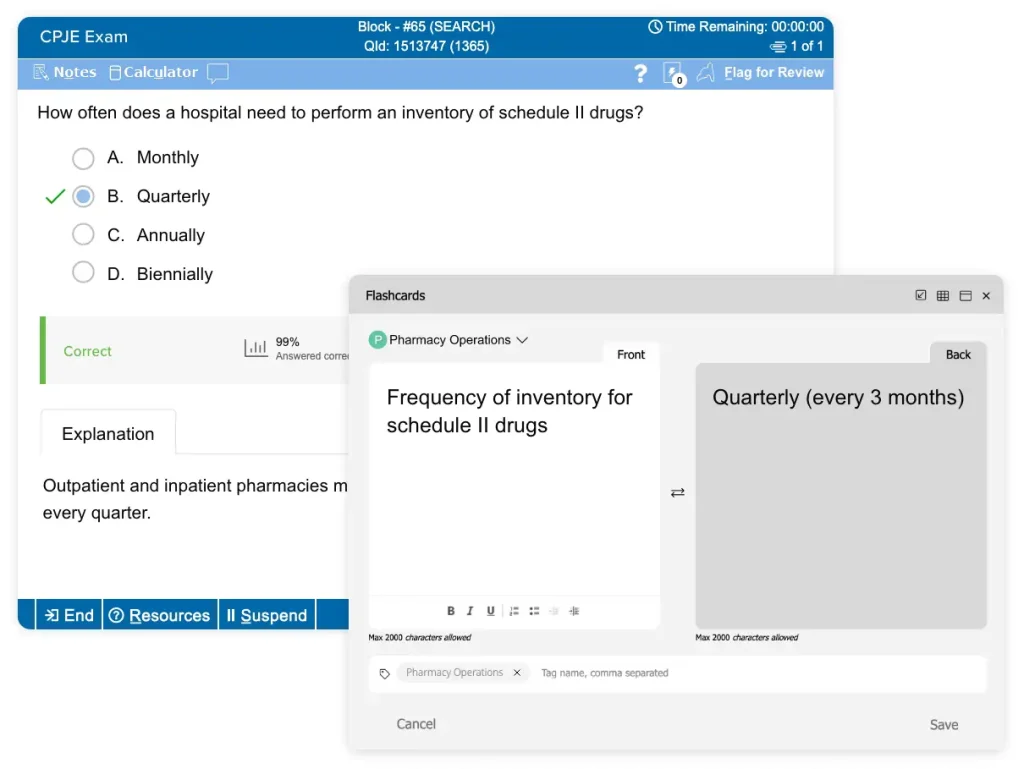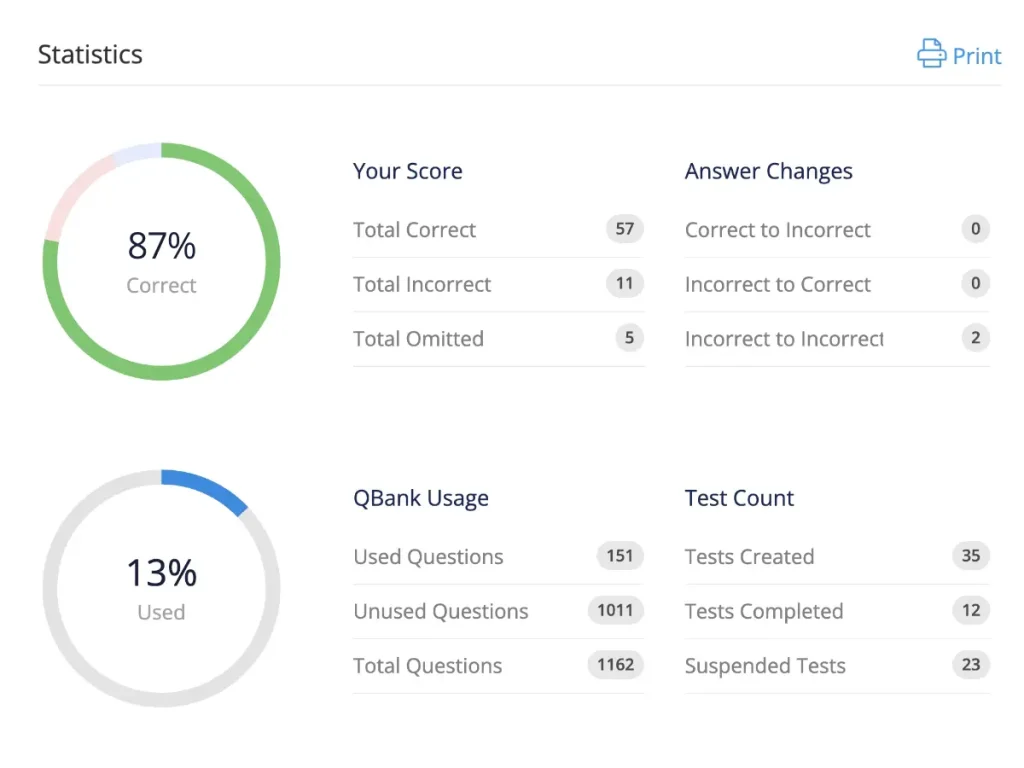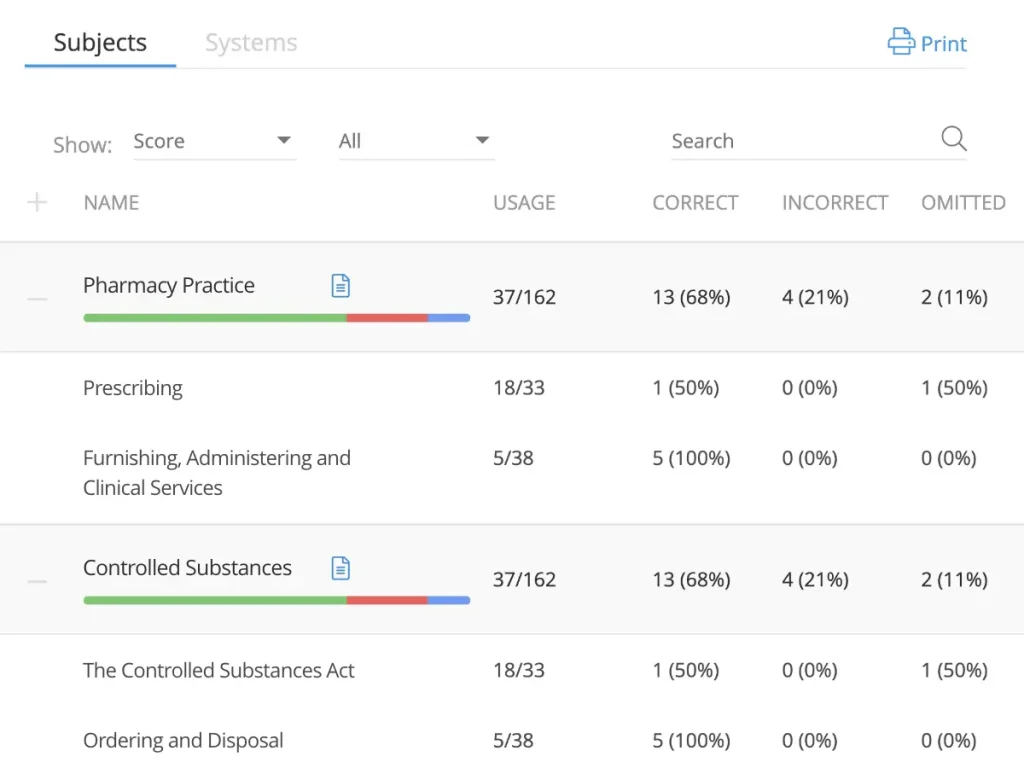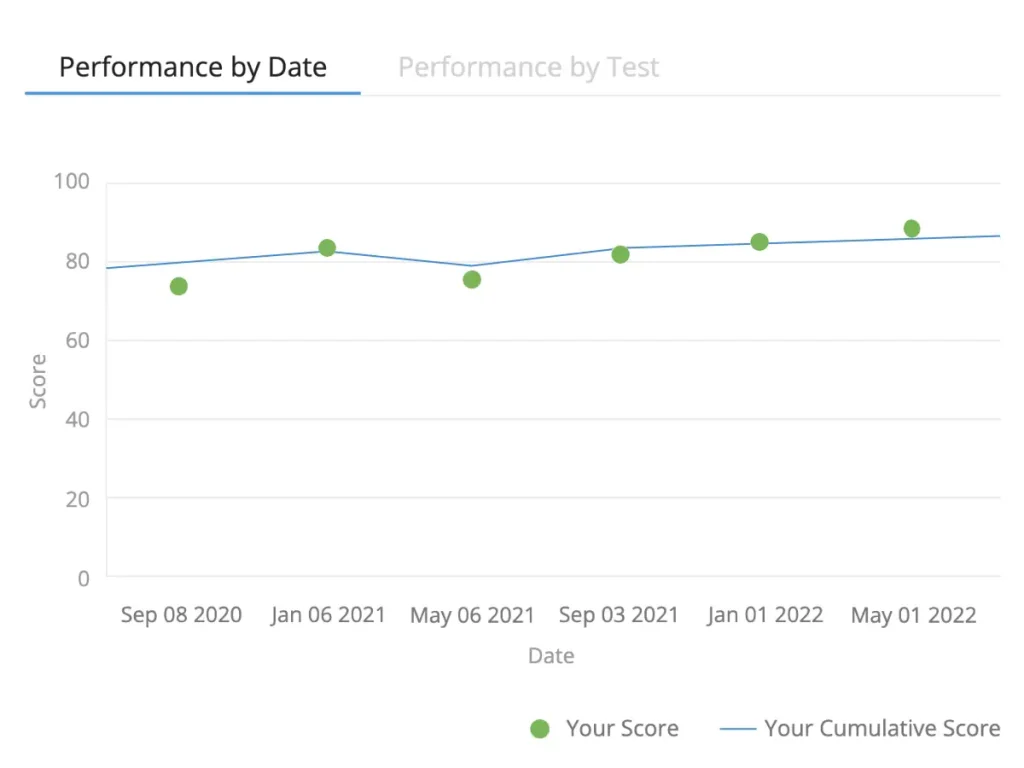Taking the CPJE requires a thorough understanding of both California law and clinical knowledge. The exam assesses your ability to apply clinical knowledge in real-world scenarios. With expert tips, you can create a personalized study plan, maximize your study time, and set yourself up for success on exam day.
What to Study for the CPJE
Before you begin studying for the CPJE, you should review the PSI candidate information bulletin, which contains examples of previous exam questions and important details. Other vital information on the California Board of Pharmacy website that should be reviewed includes:
- Self-assessment forms (e.g., Community Pharmacy/Hospital Outpatient and Compounding)
- Recent editions of the CA BOP’s newsletter, The Script
It is important to use comprehensive study materials that review California law and the application of clinical topics. UWorld RxPrep offers a comprehensive CPJE online course that improves your chances of passing.
Concentrate on the 3 topic areas in the CPJE Content Outline:
| California Board of Pharmacy CPJE Basic Content Outline | |||
|---|---|---|---|
| Area | Topic | Items | % |
| Area 1 | Patient Information and Prescription Evaluation
|
23 | ~31% |
| Area 2 | Clinical Practice
|
27 | ~36% |
| Area 3 | Pharmacy Operations
|
25 | ~33% |
How to Study for the CPJE
Studying for the CPJE should align with your NAPLEX study schedule. It is recommended that the CPJE be scheduled shortly after taking the NAPLEX. Since the CPJE tests you on clinical knowledge, starting your CPJE prep shortly after the NAPLEX will help keep the clinical content that you studied for the NAPLEX fresh in your mind. Even if you're a licensed pharmacist in another state, you’ll want to review clinical content, given the CPJE’s rigorous focus on clinical knowledge, including brand and generic drug names.
How Long to Study for CPJE
Since the CPJE tests clinical knowledge in addition to pharmacy law, the total duration for studying both may range from 3 to 6 months. If you are a licensed pharmacist outside of California, you may need longer to review clinical and law content. See our NAPLEX Study Guide for tips on studying clinical material.
UWorld RxPrep CPJE Study Materials
Given the breadth of clinical knowledge that is tested on the CPJE, it is recommended to use the UWorld RxPrep NAPLEX course materials — which include a review of the top prescription and over-the-counter drugs — in addition to the UWorld RxPrep CPJE Online Course — which primarily focuses on the law portion of the exam. The UWorld RxPrep CPJE Online Course includes:
- CPJE Course Manual: Features up-to-date content, California-specific law study tips, and thorough explanations of concepts. The Course Manual works seamlessly with the QBank and video lectures for a streamlined learning experience.
- Question Bank (QBank): Over 350 California-specific questions developed by pharmacists and pharmacy law experts that mirror the exam in difficulty and substance. Generate CPJE practice exams and test yourself on specific topic areas or take a timed 75-item practice exam with CPJE-style questions to mimic the actual test.
- Video Lectures: Video lectures increase recall and simplify the complex legal and pharmacological concepts you will encounter in your reading.
- Performance Tracking: Target your weaknesses and turn them into strengths with detailed performance tracking.
- Time-Saving Study Tools: Retain more with spaced repetition flashcards, save hours notetaking with a digital notebook, and learn on the go with an integrated mobile app.
Here is an example CPJE-style question:
How to Effectively Use the UWorld RxPrep Study Materials
When reviewing a topic on your CPJE study plan, use your time efficiently by first assessing how well you know the topic. If you feel confident, a quick refresher from the course manual is all you need before proceeding to the QBank. If you do not feel confident with the topic, spend more time reading the chapter and watch the corresponding video lecture before attempting practice questions.
To complete the QBank questions for a topic, create a test with questions from that chapter. Questions can be completed in tutor mode, which immediately grades each question and provides an explanation upon submission of the answer. QBanks can also be taken in timed mode to simulate the testing environment.
At any point in your studies, you can create integrated tests within the QBank by mixing questions from multiple chapters.
Using UWorld RxPrep Flashcards to Help Retention
As you progress through the UWorld RxPrep CPJE QBank, you can create flashcards by transferring written and visual content from the practice questions and answer explanations to both sides of a new flashcard. You can also add your own notes and create custom tags for improved flashcard searchability.
Our flashcards also use spaced repetition, a proven study technique that boosts your retention by allowing you to determine the frequency with which you will encounter specific flashcards. Flashcards you find challenging will appear more frequently, while those you find less difficult will appear less often. Applying spaced repetition to your pharmacy flashcards increases retention and helps you work smarter, not harder.
Flashcards are an effective way to remember content for a high-stakes exam, so we encourage you to incorporate them into your studies. They are a great way to learn key content, such as brand/generic drug names, common drug class side effects, and more. Using flashcards within our platform also helps keep all of your study resources in one place.
Test Your CPJE Knowledge
When completing the CPJE QBanks:
- Review the detailed performance reports located in the “Reports” tab. The “Reports” tab provides a breakdown of all the CPJE subjects and chapters and how you performed in each one.
- Identify your areas of weakness and create additional practice tests and flashcards in those areas to improve.
- Track your progress over time to ensure you are improving. You can do this by reviewing the “Graphs” tab in the QBank.
After you have identified your areas of weakness, there are multiple ways to go back and review those subjects and chapters.
- Create flashcards on the topics you need additional help with and review them in the “Study” tab. Add content to your electronic notebook, which you can review anytime. Take advantage of the customization function. You can bold content, italicize, underline, and much more.
- In the "Create Test" tab of the QBank, you can create a custom practice test based on your areas of weakness. In the “Question Mode” section, select “Incorrect,” and you will see how many questions you got incorrect in each subject and chapter.
- In the "Previous Tests" tab, there is an icon labeled “Analysis,” which allows you to analyze your performance on your previous tests. You can create practice tests based on the questions you missed by clicking on the blue clipboard icon next to each subject.
- You can see an overview of your performance on all CPJE subjects in the “Reports” section within the “Performance” tab. You can create practice tests based on the questions you missed by clicking on the blue note icon next to each subject.
How to Create a Customized CPJE Study Schedule
Preparing for a high-stakes test requires a well-thought-out strategy and a study schedule that works for you. Create a study plan that fits into your timeline for taking the NAPLEX and CPJE. Consider the following tips:
- Determine your timeline Pick a target exam date to work towards. Determine the amount of time per day you have available to study, considering your other responsibilities (e.g., work, family, school assignments). Remember, time should be allotted for all topics.
- Always leave weekly catch-up time It is normal to fall behind. Allowing for catch-up time will help you stay on schedule. If you cannot stick to your schedule, it is best to change your target exam date and adjust your study schedule. The topics you did not prepare for could be on the exam.
- Leave 1 week before your estimated test date open Use the last week before your scheduled exam to take the UWorld RxPrep CPJE Practice Exam and remediate any missed areas. The goal is to master all of the UWorld RxPrep material before testing.
Read More About the CPJE
Visit our exam information page to learn about the CPJE, including its format and structure, eligibility requirements, and full content outline.
CPJE Registration, Cost, and Eligibility
This page provides an overview of CPJE registration dates, costs, and eligibility requirements. Read more for information on these crucial details.
Visit our guide that breaks down scoring, passing requirements, licensing requirements, and everything else you need to know to pass


